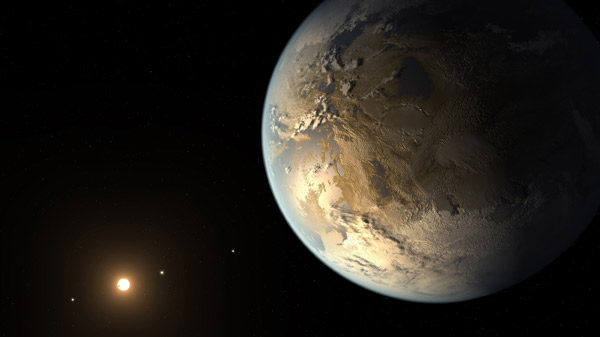
Kepler-186f, the first validated Earth-size planet to orbit a distant star in the habitable zone-a range of distance from a star where liquid water might pool on the planet's surface, is seen in a NASA artist's concept released April 17, 2014. [Photo/Agencies]
CAPE CANAVERAL, Fla. - A planet believed to be remarkably similar to Earth has been discovered orbiting a distant sun-like star, bolstering hopes of finding life elsewhere in the universe, US scientists said on Thursday.
The planet, which is about 60 percent bigger than Earth, is located 1,400 light years away in the constellation Cygnus. It was discovered by astronomers using NASA's Kepler space telescope and circles a star that is similar in size and temperature to the sun, but older.
"In my mind, this is the closest thing we have to another planet like the Earth," astronomer Jon Jenkins, with the US space agency's Ames Research Center in Moffett Field, California, told reporters on a conference call.
The planet, dubbed Kepler-452b, orbits a star that is about 6 billion years old, compared to the 4.6 billion year age of the sun.
"It's simply awe-inspiring to consider that this planet has spent 6 billion years in the habitable zone of its star," Jenkins said.
"That's considerable time and opportunity for life to arise somewhere on its surface or in its oceans should all the necessary ingredients and conditions for life exist on this planet," he said.
Kepler-452b is positioned about as far from its parent star as Earth is from the sun, completing an orbit in 385 days, compared to Earth's 365-day orbit. At that distance, surface temperatures would be suitable for liquid water, a condition believed to be critical for life.